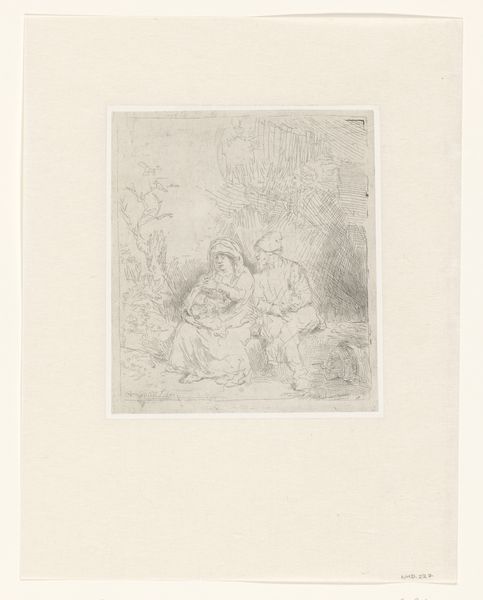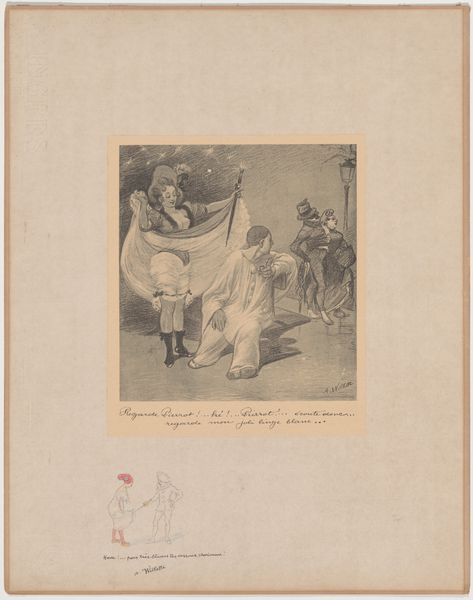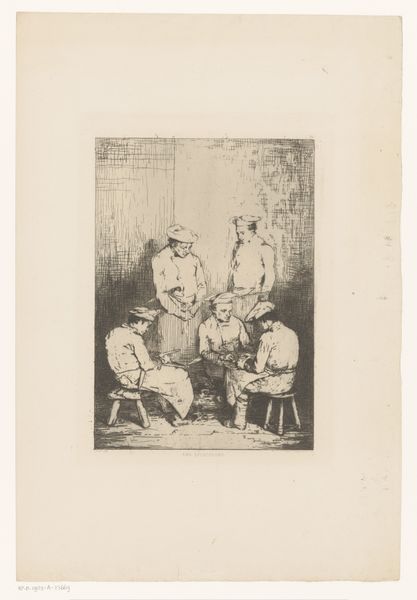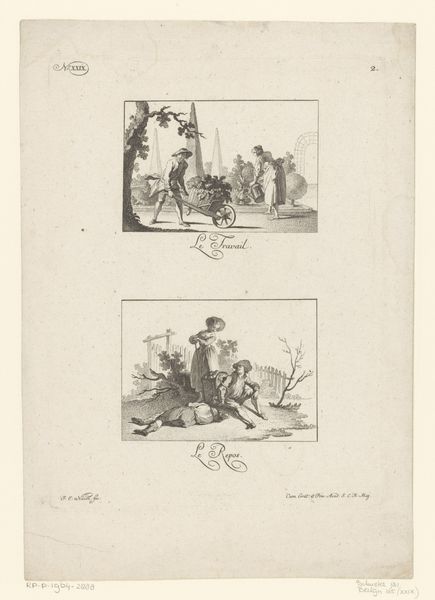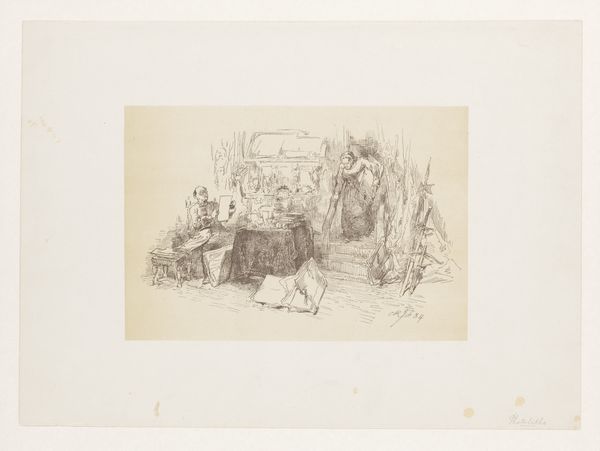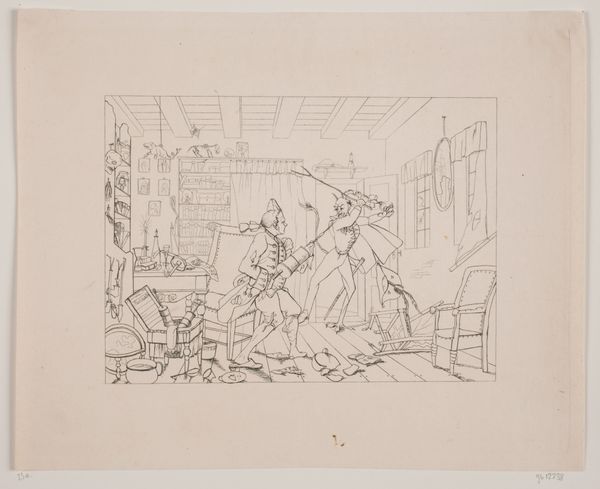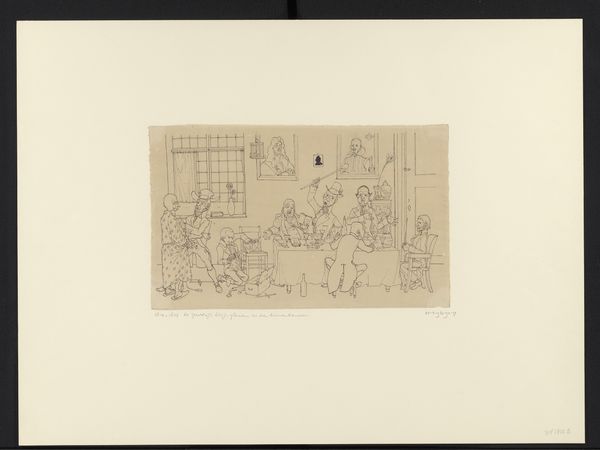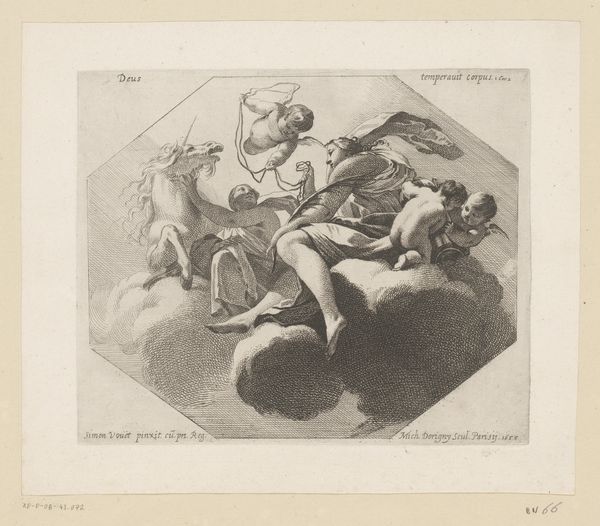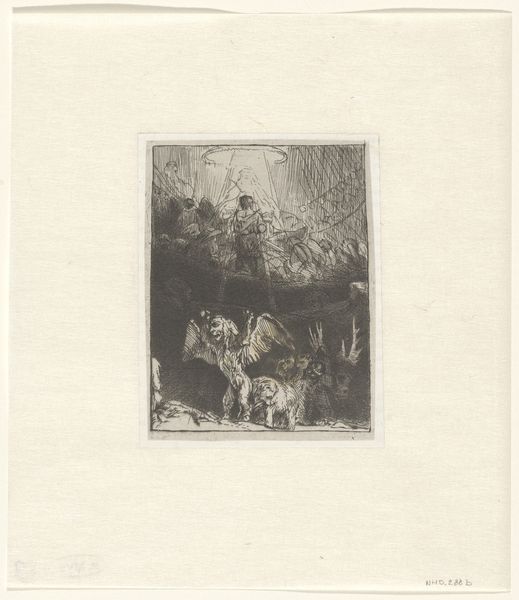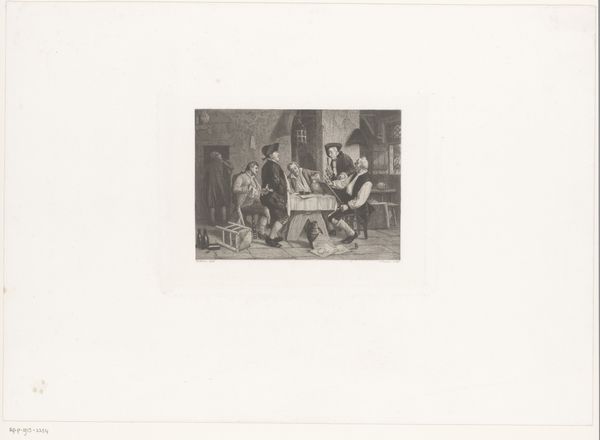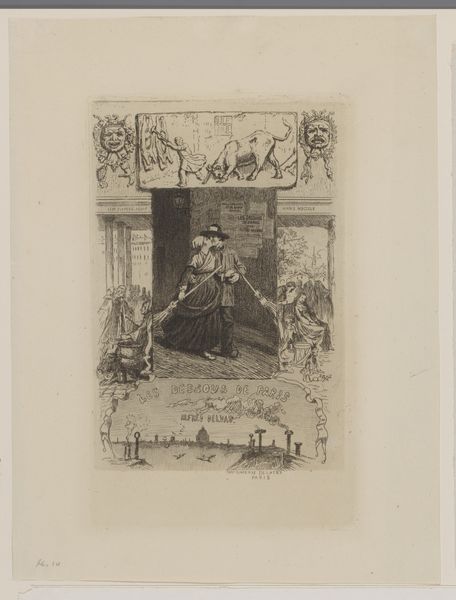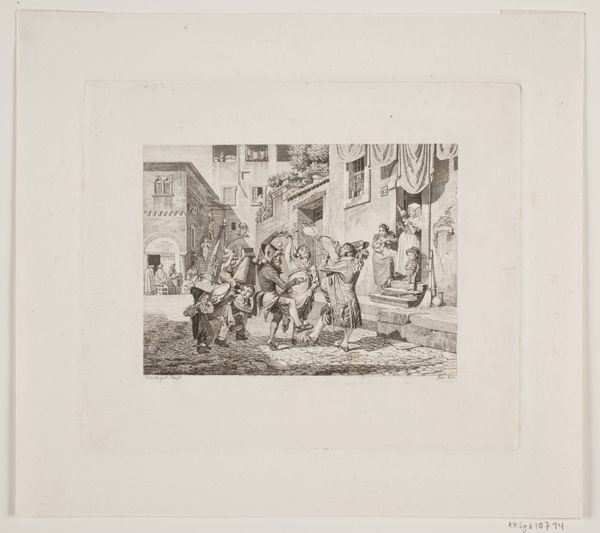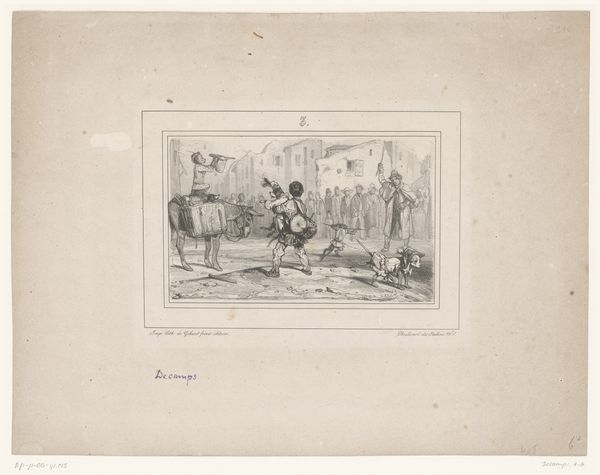
drawing, print, etching
#
drawing
# print
#
etching
#
caricature
#
etching
#
genre-painting
Dimensions: image (drawing): 9.53 × 18.42 cm (3 3/4 × 7 1/4 in.) image (print): 38.42 × 25.4 cm (15 1/8 × 10 in.) mount: 57.15 × 45.72 cm (22 1/2 × 18 in.)
Copyright: National Gallery of Art: CC0 1.0
Editor: This is "Séquestré," an etching and print by Adolphe Léon Willette, from 1912. The composition with these distinct vignettes is quite intriguing, and it gives a rather dreamlike impression... What socio-historical narrative do you think this artwork is aiming to create? Curator: It certainly evokes a fragmented narrative! Consider the title, "Séquestré," meaning sequestered or confined. This print, made during the Belle Époque, speaks volumes about societal expectations and constraints, especially on women and perhaps artists themselves. Editor: In what ways? Curator: Well, look at the scenes: We see domesticity juxtaposed with what appears to be artistic creation. In the top scene, what’s that fellow holding aloft? In the lower image, we see an artist seemingly immortalizing someone in art. But who dictates whose story gets told, and how? Editor: So, are you suggesting that the work reflects themes of power dynamics inherent in both artistic creation and the social constraints placed on individuals? Curator: Precisely. Willette cleverly uses caricature to expose those dynamics, questioning who has the power to define and confine others. He’s hinting at the confinement of social expectations and gender roles in artistic expression. The woman literally confined within the domestic interior mirrors a creative individual who must conform. Consider too that etching and printmaking processes, like societal structures, imprint a certain image. Editor: I hadn't considered that parallel! It does invite reflection on societal structures. Curator: Absolutely. And that's where art can challenge us—to question, to see beyond the surface and engage with the broader socio-political contexts that shape our world and what we believe. Editor: Thanks, I never thought about this piece like that. Now, I definitely see it differently!
Comments
No comments
Be the first to comment and join the conversation on the ultimate creative platform.
